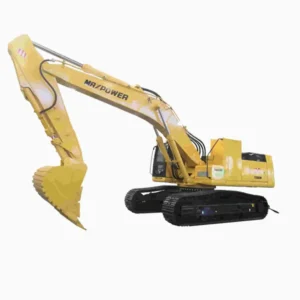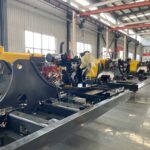What Are Mini Excavator Dimensions?Mini excavators have become increasingly popular for their versatility and compact size, making them a valuable tool for a variety of construction and landscaping projects. However, when it comes to choosing the right mini excavator, one of the most important factors to consider is the size and dimensions. In this article, we will explore the different dimensions of mini excavators and what you should keep in mind when choosing the right machine for your project.
Table of Contents
- Introduction
- What are Mini Excavators?
- Why is Understanding Mini Excavator Dimensions Important?
- What are the Different Dimensions of a Mini Excavator?
- Overall Size
- Weight
- Height
- Length
- Width
- Digging Depth
- Dumping Height
- Reach
- Factors to Consider When Choosing the Right Mini Excavator
- Type of Project
- Jobsite Conditions
- Transport and Storage
- Conclusion
- FAQs
Introduction
Mini excavators are compact and versatile machines that are ideal for digging, trenching, and excavation projects. These machines are typically smaller than traditional excavators and can fit into tighter spaces, making them ideal for landscaping, construction, and demolition projects. While mini excavators come in a range of sizes and configurations, it is important to understand the dimensions of the machine to ensure that it is the right fit for your project.
What are Mini Excavators?

Mini excavators are small, tracked machines that are designed to perform a range of digging and excavation tasks. These machines are typically smaller than traditional excavators and are used for projects where access is limited or space is tight. Mini excavators are equipped with a digging arm, or boom, and a bucket attachment, which can be used to dig, lift, and move material.
Why is Understanding Mini Excavator Dimensions Important?
Understanding the dimensions of a mini excavator is important for a number of reasons. Firstly, it can help you determine whether the machine will be able to access and operate in the intended workspace. Secondly, it can help you choose the right machine for the job, ensuring that you have the right digging depth, reach, and dumping height to complete the project. Finally, understanding the dimensions of a mini excavator can help you transport and store the machine safely and efficiently.
What are the Different Dimensions of a Mini Excavator?
Mini Excavator Dimensions:The dimensions of a mini excavator can vary depending on the make and model of the machine. However, there are several key dimensions that are important to consider when choosing the right machine for your project.
Overall Size
Mini Excavator Dimensions:The overall size of a mini excavator refers to the length, width, and height of the machine. This dimension is important because it can impact the machine’s maneuverability and its ability to operate in tight spaces. Mini excavators typically range in size from around 6 to 8 feet in height, 12 to 16 feet in length, and 4 to 7 feet in width.
Weight
Mini Excavator Dimensions:The weight of a mini excavator is another important dimension to consider. The weight of the machine can impact its transportability, stability, and digging power. Mini excavators can range in weight from around 1,500 pounds to over 18,000 pounds.
Height
Mini Excavator Dimensions:The height of a mini excavator is an important dimension to consider if you will be working in areas with low overhead clearance. Mini excavators typically range in height from around 6 to 8 feet.
Length
Mini Excavator Dimensions:The length of a mini excavator is important because it can impact its ability to maneuver in tight spaces. Mini excavators typically range in length from around 12 to 16 feet.
Width
Mini Excavator Dimensions:The width of a mini excavator is another important dimension to consider when working in confined spaces or narrow passageways. Mini excavators typically range in width from around 4 to 7 feet.
Digging Depth
Mini Excavator Dimensions:The digging depth of a mini excavator is the maximum depth that the machine can dig into the ground. This dimension is important to consider when choosing the right machine for your excavation project. Mini excavators typically have a digging depth ranging from around 5 to 15 feet.
Dumping Height
Mini Excavator Dimensions:The dumping height of a mini excavator is the maximum height to which the machine can lift and dump material. This dimension is important to consider when choosing the right machine for your project, especially if you need to dump material into a high-sided truck or container. Mini excavators typically have a dumping height ranging from around 6 to 15 feet.
Reach
Mini Excavator Dimensions:The reach of a mini excavator is the maximum horizontal distance that the machine’s boom and bucket can reach. This dimension is important to consider when working in areas where the machine needs to reach a specific distance or angle. Mini excavators typically have a reach ranging from around 10 to 20 feet.
Factors to Consider When Choosing the Right Mini Excavator

When choosing the right mini excavator for your project, there are several factors to consider. These factors can impact the machine’s performance, maneuverability, and suitability for the job.
Type of Project
The type of project you are working on will play a significant role in choosing the right mini excavator. If you are working on a landscaping project, you may need a smaller machine with a narrow width and digging depth. However, if you are working on a construction project, you may need a larger machine with a greater digging depth and reach.
Jobsite Conditions
The jobsite conditions will also impact the choice of mini excavator. If you are working on rough terrain, you may need a machine with greater stability and a wider base. If you are working in a confined space, you may need a machine with a smaller size and narrower width.
Transport and Storage
The size and weight of the mini excavator will also impact its transport and storage requirements. If you need to transport the machine to different job sites, you will need a machine that can be easily loaded onto a trailer or truck. If you have limited storage space, you may need a machine that can be stored in a smaller area.
Conclusion
Mini excavators are a versatile and valuable tool for a range of construction and landscaping projects. Understanding the different dimensions of mini excavators is crucial in choosing the right machine for the job. By considering the overall size, weight, height, length, width, digging depth, dumping height, and reach, you can select the right mini excavator to suit your project’s needs.
FAQs
- What is the difference between a mini excavator and a standard excavator?
- How do I determine the right size mini excavator for my project?
- What is the average weight of a mini excavator?
- Can mini excavators be used for demolition projects?
- Are mini excavators easy to transport and store?






-150x150.webp)
